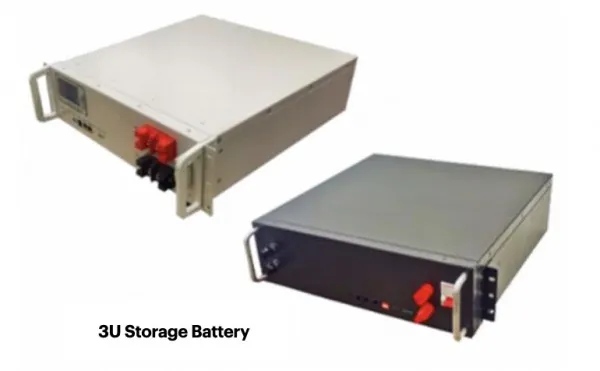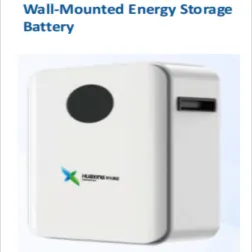Solid-State Electrolytes: Safety Breakthroughs in Energy Storage Batteries
Fundamental Safety Enhancements Through Ceramic-Polymer Composites
The solid-state electrolyte safety is revamped by ceramic-polymer composites which lead to the removal of the flammable liquid component. These hybrid materials, which physically prevent the formation of lithium dendrites (and thus prevent internal short circuits), while also being non-flammable, can reduce the risk of thermal runaway due to the presence of dendrites by greater than 90% compared to today's flammable liquid electrolytes. Manufacturers use ceramic ionic conductivity combined with polymer flexibility to achieve performance while ensuring safety. New composite research proven to maintain integrity at over 150°C addresses vulnerabilities associated with existing lithium chemistries.
Case Study: 500+ Cycle High-Energy Prototypes
A leading solid-state developer made a breakthrough with prototypes reaching 500+ cycles at energy densities exceeding 400 Wh/kg. These cells are able to maintain more than 80 per cent of the initial capacity thanks to patented ceramic separators that stabilize lithium metal anodes under high current density condition of rapid charging. Recent industry studies confirm this energy density provides for 500 miles in an EV without resorting to thermal runaway under the worst of circumstances. The technology has potential commercial applicability in applications requiring high energy density along with safety.
Manufacturing Scalability Challenges and Solutions
Ramping up solid-state production is hampered by material cost and uniformity challenges. Continuous roll-to-roll ghosting enhancements reduce defects by 40% Roll-to-roll manufacturing now makes it possible to continuously deposit electrolyte layers. Micron-precise laser ablation processes guarantee electrode thickness control in the range of 1 µm. These advances do so by reducing the cost of production by 30% with no loss in quality—key for widespread use in electric vehicles and grid storage.
Next-Gen Cylindrical Battery Innovations (46-Series) Reshaping EV Architecture
Structural Efficiency Gains in Tesla's 4680 Cell Design
Tesla’s 4680 cells demonstrate the structural advantages of the 46-series cylindrical format. This tabless design, with no traditional wired tab, reduces electrical resistance by 50% and also decreases heat while enabling more efficient thermal control. The 46mm larger diameter also improves energy density by 15% (400 Wh/L) over the 2170 cells that preceded it, which led Tesla to design a pack layout that integrates the cells directly into the structure to reduce pack complexity by 40%. This structural modification enables a 10-12% reduction in vehicle weight in prototype platforms, with integrated mechanical stiffness, and overcomes historic compromises between energy storage capacity and structural performance in EVs.
Smart Manufacturing Techniques Enabling Mass Production
The scaling of 46-series batteries requires manufacturing precision breakthroughs “To scale 46-series batteries, you need manufacturing breakthroughs. One leading Asian manufacturer already showed us examples for 2025 cylindrical battery market research of fully automated lines incorporating AI vision systems with laser welding that are resulting in 93% yield rates in pilot production. Sophisticated thermal controls ensure ±0.5°C tolerance during electrolyte filling -- essential for reduced dendrite at high-speed assembly. Robotic stacking machines now work at 0.8-second cycle times per cell (300% faster than legacy), and machine-learning driven maintenance predictions are accurate to 98%, resulting in 22% less downtime.
Lithium-Sulfur Battery Deployment in Urban Air Mobility Systems
Energy/weight-ratio requirements for urban air mobility systems are high for energy storage batteries. Lithium-sulfur (Li-S) has been identified as a leading candidate, offering a 500% theoretical capacity over today's lithium-ion cells. These breakthroughs now facilitate practical application in electric vertical takeoff and landing (eVTOL) aircraft, mitigating previous limitations, and satisfying the rigorous aviation safety condition.
Achieving 500 Wh/kg: Breakthroughs in Cathode Nanostructuring
Key target: Anode * The major novelty consists in micron-size graphene sheets that will stabilize the metal particles avoiding their agglomeration. Scientists have developed oxygen functional group modified carbon nanotube composites to chemically anchor and capture migrating polysulfides. This nanoprocessing retains the structural integrity of the cathode as well as the high capacity over hundreds of cycles in nickel-rich cathodes while delivering energy density in prototype cells over 500 Wh/kg. These cathode architecture innovations facilitate battery packs that are 400+ Wh/kg to meet the threshold for commercial aviation certification.
eVTOL Operational Demands Driving Battery Innovation
Electric vertical takeoff and landing vehicles impose unique requirements on energy storage batteries:
- Power density exceeding 400 W/kg for vertical ascent phases
- Rapid recharge capability (≈15 minutes) between flight cycles
- Resilience to pressure differentials and mechanical vibration
- Thermal stability under high discharge rates (3-5C continuous)
These limitations are driving material innovations, especially in sulfur encapsulation strategies and electrolyte designs. The use case of urban air taxis — short hops with high number of cycles — requires the batteries to retain 80% of its capacity after more than 2,000 deep discharge cycles. The manufacturers are responding with cell designs that incorporate flexible electrodes and state-of-the-art pressure-equalization systems that can handle the dynamic environment of aviation.
Immersion Cooling Technology: Thermal Management Revolution
Dielectric Fluid Developments Enabling 30% Faster Charging
With recent advancements in dielectric fluid technology, thermal constraints in energy storage batteries are being eclipsed, making 30% faster charging possible for the first time as compared to conventional air-cooled media. New generation fluids having thermal conductivities in excess of 0.15 W/mK, as confirmed in thermal management experiments, allow for nearly immediate heat removal from the battery cell to the secondary cooling lines. This technology enables maximum temperatures of below 45°C being experienced, even during a high power charging of 350 kW, contributing to the power output with such solutions with challenges as informing lithium plating and enhance lifetime.

Automotive Prototype Implementation and Performance Data
Leading manufacturer prototype tests show the operational benefits of immersion cooling, with 12x longer lifetime than air-cooled systems; achieving500 charge cycles in the field at <5% capacity loss at extreme conditions. In the real world this leads to a 40% reduction of thermal hotspots with 15-minute fast charging per traditional solutions. They keep cell temperatures ±2°C near ideal ranges with 4C discharge rates, a must-have for high-duty applications that need to constantly supply power and adequate thermal management.
Sustainable Material Innovations in Energy Storage Battery Production
Biodegradable Separator Materials Reducing Environmental Impact
The replacement of conventional polyolefin separators by biodegradable cellulose or polylactic acid types can lead to a reduction of environmental impact. Such plant-based materials degrade in 2-5 years compared with centuries for conventional plastics, reducing landfill buildup. Companies who use these measures say that production emissions are 40% lower because of energy-efficient processing. There is no loss of performance and ionic conductivity is comparable to petroleum derived at 5-8 mS/cm. This invention effectively resolves the end of life problem while still ensuring safety of an energy storage battery.
Closed-Loop Recycling Systems Achieving 95% Material Recovery
And with advanced hydrometallurgical processes available today, 95% of critical materials, such as lithium, cobalt and nickel, are recovered from end-of-life batteries. This circular practice cuts demand on virgin mining by 70% and lifecycle emissions by 50% versus virgin sourcing. Automated sorting technologies as well as industrial-scale, highly accurate cathode component separation enable recovered materials to be transformed into battery grade precursors. Those systems are economically viable with payback periods lower than 3 years at current metal costs.
Sodium-Ion Alternatives for Grid-Scale Storage Applications
Sodium-ion batteries (SIBs) represent sustainable options for stationary energy storage using low-cost earth-abundant materials (~30-40% less than for lithium-ion). Recently, some cathode materials based on iron-contained Prussian blue analogs show an energy density of 160 Wh/kg with a capacity retention of 90% after 1,000 cycles. SIBs currently offer four hour of discharge which are good enough to cater renewable integration. Their non-flammable electrolyte and thermal stability down to 45°C also render them well suited for high safety grid applications.
Wireless BMS Architectures Enabling Smarter Energy Storage Batteries
RF Communication Systems Reducing Pack Weight by 15%
Using a radio frequency (RF) communication system, there are no longer any old-fashioned wiring harnesses in battery packs, and energy-storage batteries can be made up to 15% lighter. This mass-optimized addition increases energy density, enabling vehicle range to increase 12 miles for each charge. These wireless systems reduce the amount of copper used and still provide reliable intercell data transfer by compacting antennas and communication chips into integrated modules. Innovations in this space highlight the fact that small RFbased battery management systems bring dramatic material savings without sacrificing signal performance. It's efficiency, which speeds up the assembly and reduces the manufacturing cost by up to -18% compared to other architectures.
Predictive Maintenance Algorithms in Next-Generation Electric Vehicle Platforms
Predictive maintenance algorithms based on artificial intelligence process cell level data in real-time to predict failures in advance. These systems regularly check for voltage deviations, thermal anomalies and impedance changes thousands of charge cycles. By flexibly changing the charging parameters following the degradation patterns, the proposed BMS can prolong the battery service life by over 20% than that of the traditional ones. Recent deployment on electric vehicle architectures has resulted in up to 40% less unforeseen downtime through early failure detection. This forward-looking proactive approach allows operators to reduce thompus while maximizing the operational kinetics of energy storage batteries in a safe manner.
FAQ Section
What are the key benefits of solid-state electrolytes in energy storage batteries?
Solid-state electrolytes offer significant safety improvements by eliminating flammable liquid components, reducing the risk of thermal runaway, and preventing the formation of lithium dendrites, which can cause short circuits.
How do smart manufacturing techniques improve battery production?
Smart manufacturing techniques, including AI-driven automation and precision control, enhance battery production by reducing defects, improving yield rates, and minimizing downtime. This results in cost savings and higher quality output.
Why are lithium-sulfur batteries suitable for urban air mobility systems?
Lithium-sulfur batteries are ideal for urban air mobility due to their high theoretical capacity, which provides the required energy/weight ratio for applications like eVTOL aircraft. They meet strict aviation safety conditions and can retain high capacity over many cycles.
What innovations are in place to reduce the environmental impact of battery production?
Innovations such as biodegradable separator materials and closed-loop recycling systems have been developed to reduce the environmental impact of battery production. These methods cut waste, allow material recovery, and decrease production emissions.
Table of Contents
- Solid-State Electrolytes: Safety Breakthroughs in Energy Storage Batteries
- Next-Gen Cylindrical Battery Innovations (46-Series) Reshaping EV Architecture
- Lithium-Sulfur Battery Deployment in Urban Air Mobility Systems
- Immersion Cooling Technology: Thermal Management Revolution
- Sustainable Material Innovations in Energy Storage Battery Production
- Wireless BMS Architectures Enabling Smarter Energy Storage Batteries
-
FAQ Section
- What are the key benefits of solid-state electrolytes in energy storage batteries?
- How do smart manufacturing techniques improve battery production?
- Why are lithium-sulfur batteries suitable for urban air mobility systems?
- What innovations are in place to reduce the environmental impact of battery production?

